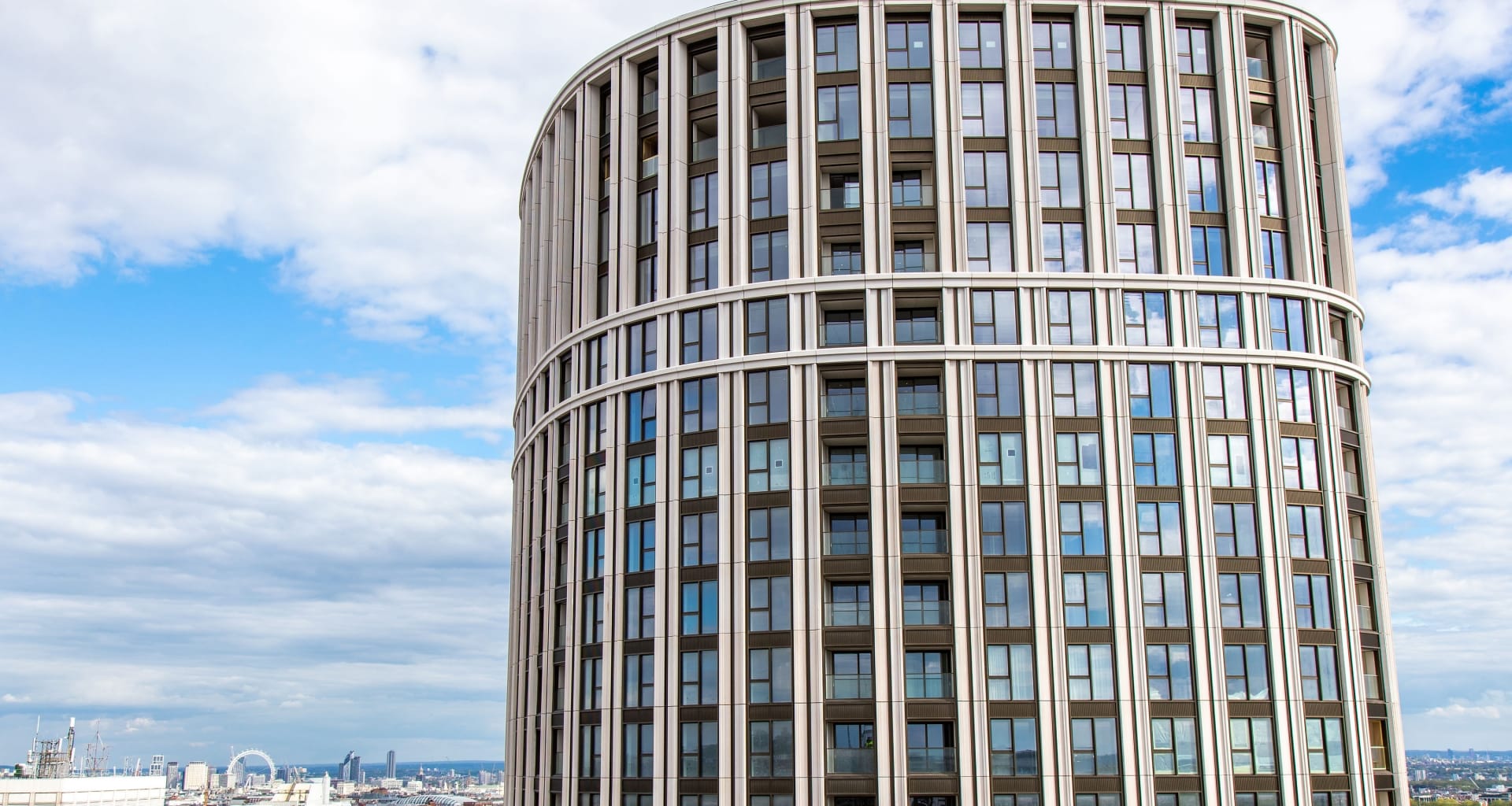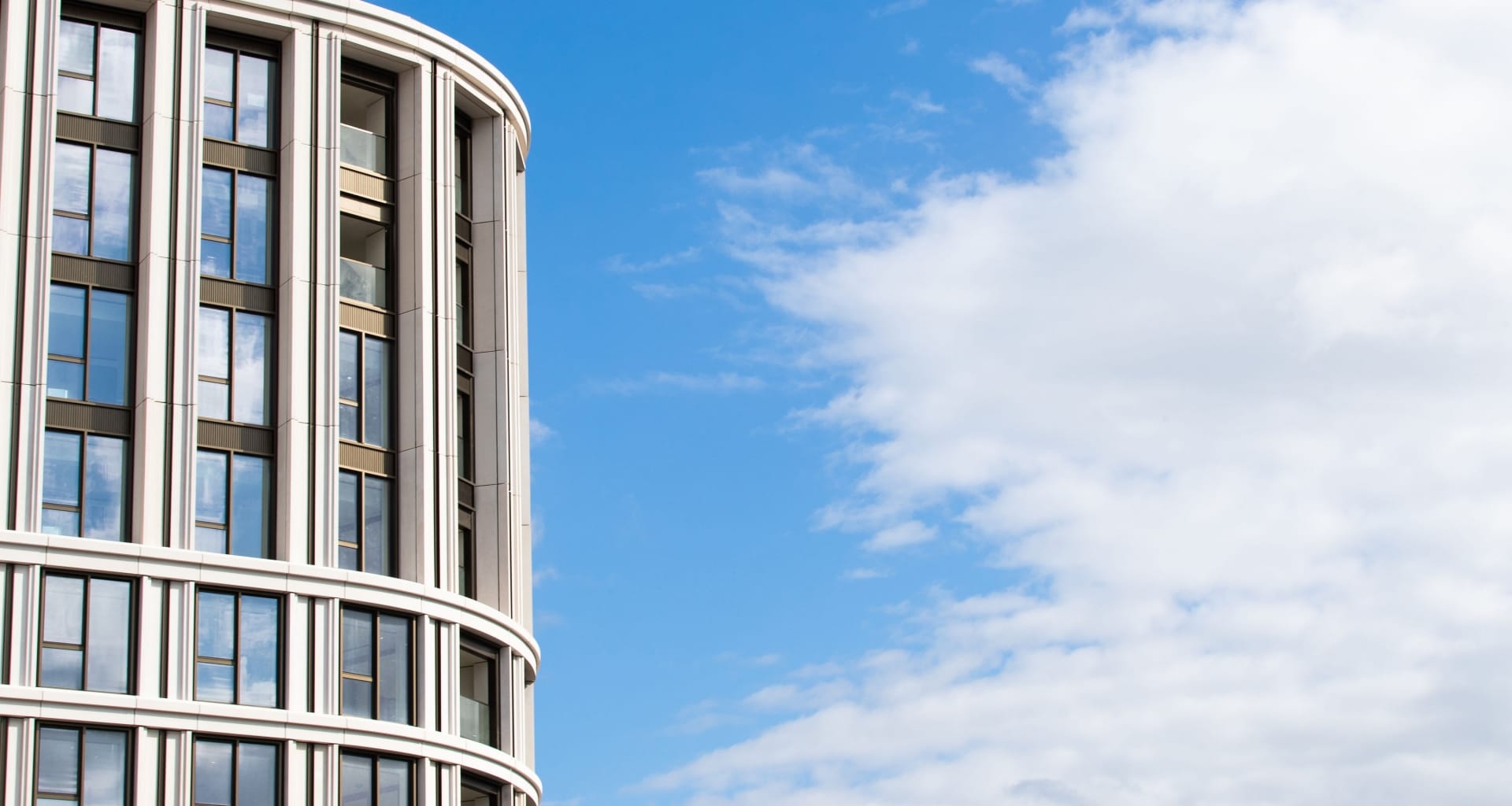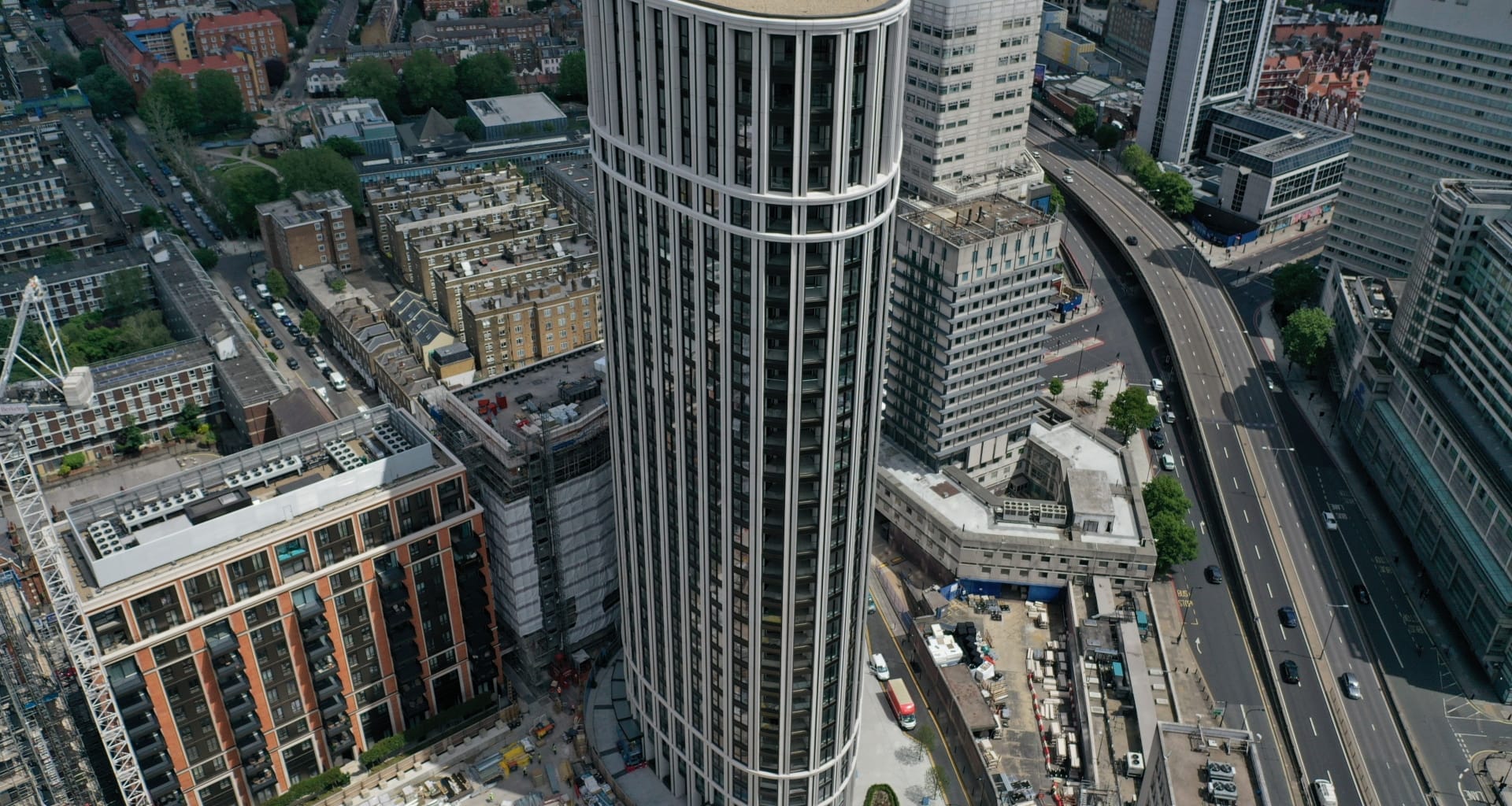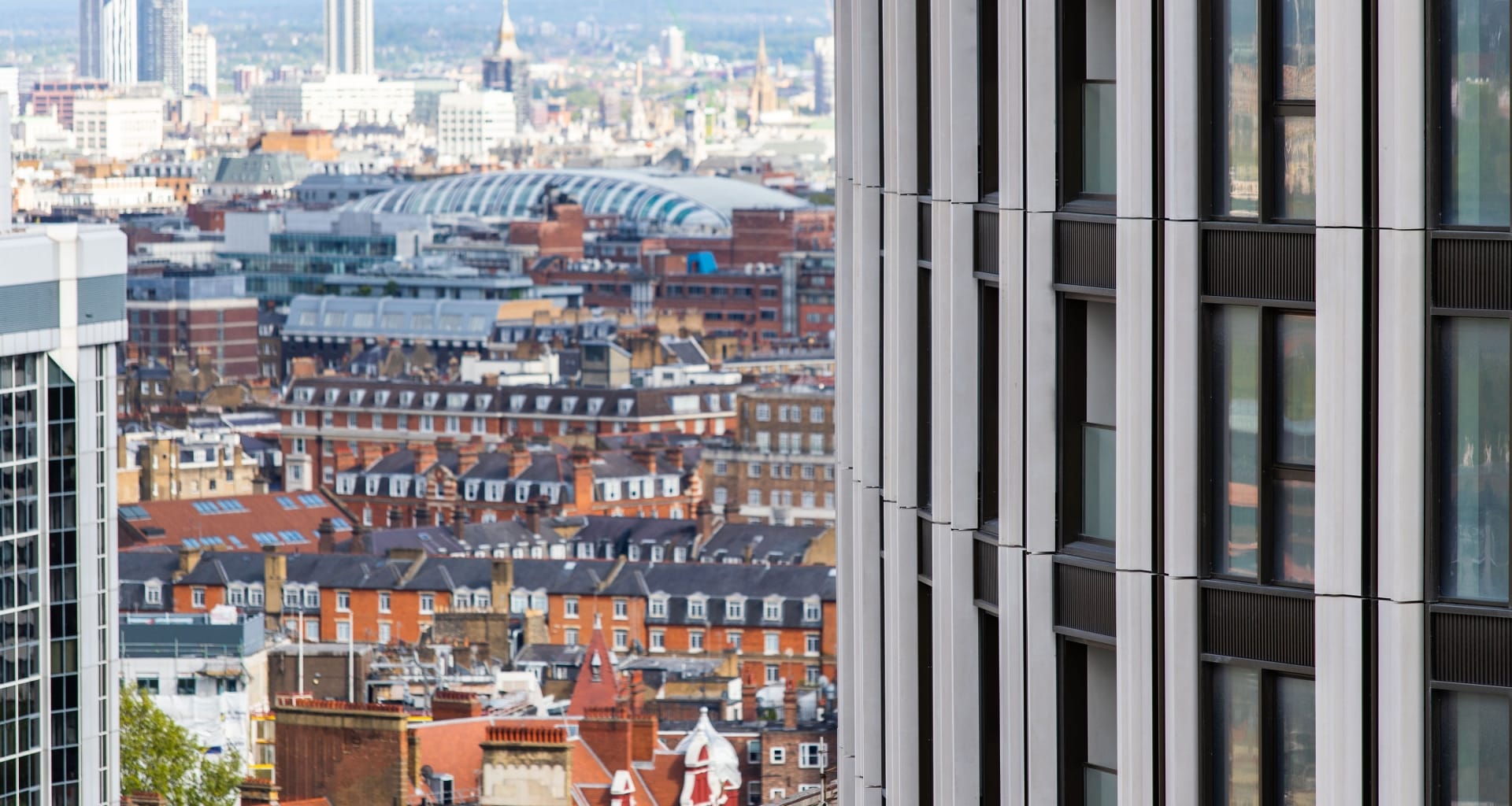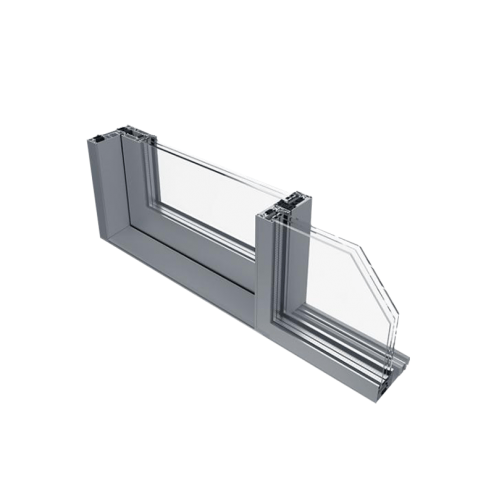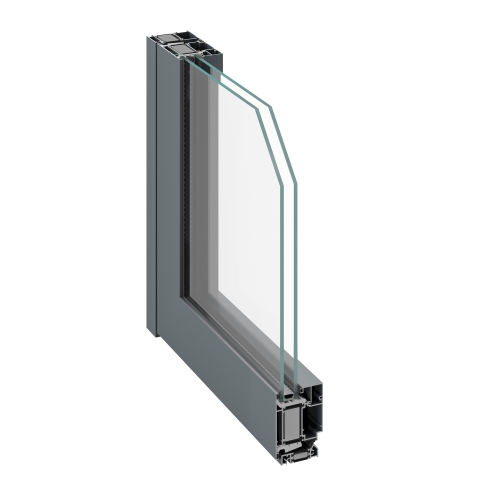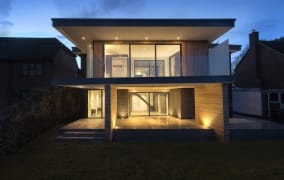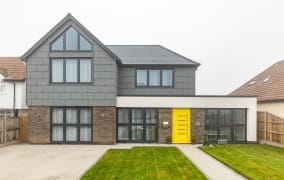The 110m, 29-storey curved on plan Westmark Tower is the tallest residential tower to have been completed in central London in 2021. Part of Berkeley Homes Central London’s prestigious West End Gate development in Marylebone, it features more than 14,000m2 of unitised curtain wall designed and supplied by aluminium fenestration specialists AluK and installed by envelope contractors Martifer.
What makes this project really stand out is the collaborative approach that was demonstrated by AluK and the other consultants involved from the outset. With Berkeley at the centre of the process, the technical and commercial elements of the façade were successfully de-risked at pre-tender stage because AluK was able to work directly with lead architect Squire & Partners, delivery architect Design Delivery Unit (DDU), façade consultants Cladtech Associates and structural engineers WSP on a RIBA 4 system design for the unitised envelope.
Jon Sheaf, AluK’s National Major Projects Manager, explained: “AluK’s specialist expertise meant that we could create a unitised façade solution for the post-tensioned concrete frame which easily satisfied the design intent, while making sensible savings on metal and accessory costs. As well as accelerating the design of the structural frame, this approach saved Berkeley many months compared to the normal procurement route and meant that the tender returns for the fabrication and installation of the façade were accurate, comparable and saved the tenderers the normal costs associated with a bid. Effectively, this de-risked the process for Berkeley as the commercial and design iteration took place pre-bid and was not left to interpretation.”
The challenge for AluK was to work with DDU to deliver a design that was true to the architect’s original intent whilst addressing the technical issues of a curved on plan façade from the second to 29th floor. All the united cells needed to be dead loaded back to a post tensioned concrete frame with a 3-dimensional floor bracket, whilst catering for the varying facets of the façade.
Tim Gledstone, Partner at Squire & Partners, commented: “Design challenges were overcome quickly and thoroughly with the AluK team. Optimum possibilities were understood and clearly communicated, generating a safe, efficient and elegant design solution.”
The final unitised solution features more than 2200 unitised cells of three principal configurations. Each floor comprises: a vision cell, typically housing AluK’s concealed vent and full height glass panes, a panel cell, specifically designed to house specialist internal framework to carry articulated GRC (Glass Reinforced Concrete) feature piers and spandrels, and a recessed balcony cell with an integrated floating glass balustrade.
With 36 different angles to overcome in a faceted design ranging from 0° to 15°, AluK developed a series of common aluminium extrusions to close the joints and reduce the number of profiles required. The horizontal stack joint uses an aluminium profile to carry the gasket and avoid the incidence of crimping as the cells are stacked around the building structure. What is also significant is that every cell connection provides four lines of system seal to ensure that the façade meets the stringent Cladtech performance specification and the CWCT Sequence B test.
AluK’s system, extruded from 6063 T6 alloy, extracted benefits from both a mitred corner and a square cut system by creating a hybrid to suit both the client’s aesthetic desire for a mitred joint to the corners and Martifer’s manufacturing requirements of a square cut for economy.
AluK also extruded tailored aluminium bracketry from a structural 6082 T6 alloy which was capable of supporting the system weight and allowing for 3-dimensional adjustment for precise installation.
From the onset of the project, the Berkeley director team set out a time and design model of early engagement, specialist designers and fabricators all within a clear programme. This also included a series of productive workshops sharing client expectations and considerations. AluK not only facilitated these meetings but also bought into the collaborative ethos and contributed to a highly successful project for Berkeley.
AluK’s designers are all from a fabrication/installation background and, as such, they design a value engineered solution from the outset. Part of this was using 14,000m2 of AluK’s AW86 unitised curtain walling system with minimal bespoke profiles and gaskets, yet it meets every challenge the project presented whilst offering a significant cost reduction in metal and accessories compared to the original specification in a competitor’s system.
As part of the project team, AluK worked collaboratively alongside consultants Squire & Partners (concept architect), Buro Happold (thermal and acoustics), WSP (structures), Design Delivery Unit (delivery architect) and Cladtech (façade consultant). The façade design meets the thermal efficiency requirements of the building at 0.95W/m2K, as a weighted average. Using a 43dB Rw(+Ctr) acoustic glass, it also meets the sound reduction targets.
Because AluK was involved at such an early stage in the project, the complete RIBA Stage 4 system design enabled façade contractors Martifer to realise significant cost savings for their tender and several months of time saving against their usual post-tender design and iteration phase. This also offered cost certainty for Berkeley and significantly de-risked the post tender delivery of the façade.
Tim Gledstone from Squire & Partners added: “Working together early in the design process allowed the design intent to be generated out of the crafted AluK products and industry latest processes. We could celebrate the best of the systems and push their potential to the optimum limits. The AluK design team were exceptional; dynamic and supportive throughout.”
Alongside the unitised curtain walling, the finished Westmark Tower will feature 241 AluK SC156 lift and slide doors, 750 concealed vents and 58 swing doors.
West End Gate is Berkeley Homes’ latest luxury development being built on a 2.66-acre site. Described as a modern interpretation of classic London, it will feature a series of contemporary mansion blocks alongside the 29-storey curved stone tower. Work began on the first phase of West End Gate in the Spring of 2018 and was completed in Spring 2021, with internal fit out nearing the end.
